Economics > QUESTIONS & ANSWERS > Clayton State University ECON 6100 Chapter 2 The One Lesson of Business. 54 Question And Answers. (All)
Clayton State University ECON 6100 Chapter 2 The One Lesson of Business. 54 Question And Answers.
Document Content and Description Below
1. One lesson of business: a. is tracing the consequences of a policy. b. promoting a policy change to eradicate inefficiencies. c. moving assets from lower to higher value uses, thereby creating w... ealth. d. None of the above Section 1: Capitalism and Wealth 2. An individual’s value for a good or service is the a. The amount of money he or she used to pay for a good b. The amount of money he or she is willing to pay for it c. The amount of money he or she has to spend on goods d. None of the above Section 1: Capitalism and Wealth 3. The difference between Capitalism and Socialism is that a. Capitalism is concerned more about how to slice up the “pie” b. Socialism is concerned with making the “pie” as large as possible c. Capitalism is concerned with making the “pie” as large as possible d. Both A and B Section 1: Capitalism and Wealth 4. A consumer values a car at $30,000 and a producer values the same car at $20,000. If the transaction is completed at $24,000, the transaction will generate: a. No surplus b. $4,000 worth of seller surplus and unknown amount of buyer surplus c. $6,000 worth of buyer surplus and $4,000 of seller surplus d. $6,000 worth of buyer surplus and unknown amount of seller surplus Section 1: Capitalism and Wealth 5. A consumer values a car at $30,000 and a producer values the same car at $20,000. The transaction will not take place if a tax is imposed a. equal to the seller surplus b. smaller than the total surplus c. larger than the total surplus d. smaller than the buyer surplus Section 1: Capitalism and Wealth 6. A consumer values a car at $30,000 and a producer values the same car at $20,000. If the transaction is completed at $24,000, what level of sales tax will result in unconsummated transaction? a. 0% b. 25% c. 20% d. 40% Section 1: Capitalism and Wealth 7. A consumer values a car at $30,000 and a producer values the same car at $20,000. What amount of tax will result in unconsummated transaction? a. $4,000 b. $9,000 c. $15,000 d. $2,000 Section 1: Capitalism and Wealth 8. A consumer values a car at $30,000 and a producer values the same car at $20,000. If a tax is levied on the seller, what level of tax will result in unconsummated transaction? a. 0% b. 25% c. 60% d. 40% Section 1: Capitalism and Wealth 9. A consumer values a house at $525,000 and a producer values the same house at $485,000. If the transaction is completed at $510,000, the transaction will generate: a. No surplus b. $25,000 worth of seller surplus and unknown amount of buyer surplus c. $15,000 worth of buyer surplus and $25,000 of seller surplus d. $25,000 worth of buyer surplus and unknown amount of seller surplus Section 1: Capitalism and Wealth 10. A consumer values a house at $525,000 and a producer values the same house at $485,000. If the transaction is completed at $510,000, what amount of tax will result in unconsummated transaction? a. A tax of $9,000 b. A tax of $14,000 c. A tax of $15,000 d. A tax of $18,000 Section 1: Capitalism and Wealth 11. A consumer values a house at $525,000 and a producer values the same house at $485,000. If the transaction is completed at $510,000, what level of tax rate will result in unconsummated transaction? a. 1% b. 5% c. 3% d. 2% Section 1: Capitalism and Wealth 12. A buyer values a house at $525,000 and a seller values the same house at $485,000. If sales tax is 8% and is levied on the seller, then what would be the lowest price that the seller would be willing to sell at? a. $527,000 b. $523,800 c. $525,000 d. $500,000 Section 1: Capitalism and Wealth 13. A buyer values a house at $525,000 and a seller values the same house at $485,000. If sales tax is 8% and is levied on the buyer, then, what would be the highest price that the buyer would be willing to pay? a. $525,000 b. $523,800 c. $485,000 d. $486,111 Section 1: Capitalism and Wealth 14. The difference between the maximum price the consumer is willing to pay and the price the consumer actually pays for a product is referred to as: a. market surplus. b. market shortage. c. consumer surplus. d. producer surplus. Section 1: Capitalism and Wealth 15. If you are willing to sell your car business for $500,000 and someone offers you $420,000 for it, this transaction will generate: a. There is no surplus created b. $80,000 worth of seller surplus and unknown amount of buyer surplus c. $40,000 worth of buyer surplus and $40,000 of seller surplus d. $80,000 worth of buyer surplus and unknown amount of seller surplus Section 1: Capitalism and Wealth 16. If you are willing to purchase a house for $300,000 and you purchase the house for $275,000, this transaction will generate: a. There is no surplus created b. $25,000 worth of seller surplus and unknown amount of buyer surplus c. $10,000 worth of buyer surplus and $15,000 of seller surplus d. $25,000 worth of buyer surplus and unknown amount of seller surplus Section 1: Capitalism and Wealth 17. If you are willing to purchase a house for $500,000 and you purchase the house for $500,000, this transaction will generate: a. There is no surplus created for either of the party. b. $0 worth of seller surplus and unknown amount of buyer surplus. c. $0 worth of buyer surplus and unknown amount of seller surplus. d. No information provided. Section 1: Capitalism and Wealth 18. Total surplus or gains created from trade equal a. Seller surplus b. Buyer surplus c. The summation of seller and buyer surplus d. Profits earned by a firm Section 1: Capitalism and Wealth 19. The biggest advantage of capitalism is that a. It generates wealth with the help of government intervention b. Prices hinder in moving assets from high-value to low-value uses c. It forces involuntary exchanges d. It creates wealth by letting a person follow his or her own self-interest Section 1: Capitalism and Wealth 20. The difference between the minimum price the producer is willing to accept and the price the producer actually receives for a product is referred to as: a. market surplus. b. market shortage. c. consumer surplus. d. producer surplus. Section 1: Capitalism and Wealth 21. If you are willing to sell your lawn mower business for $355,000 and someone offers you $420,000 for it, this transaction will generate: a. There is no surplus created b. $65,000 worth of seller surplus and unknown amount of buyer surplus c. $30,000 worth of buyer surplus and $35,000 of seller surplus d. $65,000 worth of buyer surplus and unknown amount of seller surplus Section 1: Capitalism and Wealth 22. Wealth is created when a. Assets move from lower value use to higher value use b. Assets move from higher value use to lower value use c. Assets move from individuals who are willing to pay less for them to individuals who are willing to pay more for them d. Both A and C Section 1: Capitalism and Wealth 23. A creative entrepreneur is one who knows how to a. Run a business b. Escape the burden of taxes c. Profitably exploit money making opportunities d. All of the above Section 1: Capitalism and Wealth 24. An advantage of capitalism is that a. It allows the market to self-regulate and clear itself b. It allows a person to follow his or her own self interest c. It allows voluntary transactions, which create wealth d. All of the above Section 1: Capitalism and Wealth 25. Which of the following describes a firm? a. Purchases labor hours from workers b. Borrows capital from investors c. Combines labor and capital to create production, moving them from their low value use to high value use d. All of the above Section 1: Capitalism and Wealth 26. If company X is successfully outsourcing its production of T-shirts to China, it is a. Creating wealth by moving labor in China from lower value use to higher value use b. Should be stopped on economic grounds since it is destroying wealth c. Destroying wealth by acquiring cheaper labor from China d. Both A & C Section 1: Capitalism and Wealth 27. A retailer X that is operating at a loss gets bought out by a larger chain of department stores, which shuts down the brand, using its assets for their own brand, a. Wealth is destroyed since the company shut down b. Wealth is created since the resources were of lesser value under the X brand and are now worth more c. Wealth is neither created nor destroyed since the total amount of resources stay the same d. None of the above Section 1: Capitalism and Wealth 28. Government can a. Create wealth by not interfering in the markets in any way what so ever b. Not affect wealth in the markets c. Create wealth by enforcing property rights and contracts d. Create wealth by making choice decisions for the market Section 1: Capitalism and Wealth 29. Technological advancement creates unemployment in firms that shut down or labor that is laid off. Wealth in this case is a. Destroyed, since firms are shutting down and production of certain goods and services decreasing b. Created, since the dislocated labor and resources are absorbed by new firms created through the technological innovation, moving them to higher value use c. Destroyed, since technological progress is leading to higher unemployment d. None of the above Section 1: Capitalism and Wealth 30. You are sick and tired of your old wardrobe. You decide to donate it to a charity of your choice. Your action a. Creates wealth by moving the clothes from lower value use to higher value use b. Destroys wealth since you lose your clothes c. Creates wealth by making you feel richer d. All of the above Section 1: Capitalism and Wealth 31. Your cellular phone contract is due for renewal and the company offers you a new free phone. Since you want to use your new phone, you decide to recycle your old phone. Your action a. Creates wealth by moving the phone from lower value use to higher value use b. Destroys wealth since you lose your phone c. Creates wealth by making you feel richer d. All of the above Section 1: Capitalism and Wealth 32. When the market is in equilibrium, with no government intervention, a. Total surplus is minimized b. Total surplus is maximized c. Government maximizes total revenue d. None of the above Section 2: Does the Government Create Wealth? 33. Price ceilings are primarily intended to help a. No one b. Consumers c. Producers d. Government Section 2: Does the Government Create Wealth? 34. Government can intervene in the market through a. Price floors b. Price ceilings c. Taxes d. All the above Section 2: Does the Government Create Wealth? 35. Government intervention a. can provide incentives to conduct business in an illegal black market b. plays no role in generating wealth c. is the best way to eliminate poverty d. does not enforce property rights Section 2: Does the Government Create Wealth? 36. Wealth creating transactions are more likely to occur a. With private property rights b. With contract enforcement c. Both a and b d. None of the above Section 2: Does the Government Create Wealth? 37. Price floors are primarily intended to help a. No one b. Consumers c. Producers d. Government Section 2: Does the Government Create Wealth? 38. Rent controls a. are an example of price floors. b. are an example of price ceilings. c. destroy wealth by preventing the movement of apartments to higher-valued use. d. Both b and c Section 2: Does the Government Create Wealth? 39. Price gouging a. Outlaw trade at prices above a certain price level b. Outlaw trade at prices below a certain price level c. Is an act of charging a high price to take advantage of shortages created by natural disasters d. None of the above Section 2: Does the Government Create Wealth? 40. Taxes cause: a. Market distortions b. A reduction in incentives to work c. A decrease in wealth creating transactions d. All of the above Section 3 Why Economics is Useful to Business 41. Economic reasoning is based on the premise that: a. all decisions or actions are costless. b. only non-economic decisions or actions have a cost associated with them. c. only economic decisions or actions have a cost associated with them. d. all decisions and actions have a cost associated with them. Section 3 Why Economics is Useful to Business 42. Subsidies can destroy wealth because a. subsidies move assets from lower- to higher- valued uses b. subsidies move assets from higher- to lower- valued uses c. subsidies help producers only d. subsidies help consumers only Section 3 Why Economics is Useful to Business 43. A price ceiling can often be viewed as: a. the government setting price above market equilibrium price. b. an implicit tax on producers and an implicit subsidy to consumers. c. the government setting price below market equilibrium price. d. Both b and c. Section 3 Why Economics is Useful to Business 44. An example of price floor is a. Minimum wages b. Rent controls in New York c. Both a and b d. None of the above Section 3 Why Economics is Useful to Business 45. Price ceilings cause a. Some suppliers to drop out of the market b. A decrease in the total production in the market c. The creation of black markets d. All the above Section 3 Why Economics is Useful to Business 46. The illegality of organ sales from willing donors to willing recipients is ineffective because: a. It encourages organ sales b. It discourages wealth creating transactions through the threat of heavy penalty c. It encourages government intervention d. None of the above Section 3 Why Economics is Useful to Business 47. The zero sum fallacy refers to a. You gaining only if someone else loses b. The allocation of the pieces of the total economic pie- if you eat the piece, I cannot consume it c. Ignores the possibility of the total pie growing itself d. All of the above Section 4: Wealth Creation in Organizations 48. A good policy ________________ and a bad policy _________________. a. Moves an asset to higher value use; moves an asset to lower value use b. Moves an asset to lower value use; moves an asset to higher value use c. Refrains from any government intervention; concentrates on government intervention d. Concentrates on government intervention; refrains from government intervention Section 4: Wealth Creation in Organizations 49. When taxes are levied on transactions, irrespective of the party they are levied on, a. The government can absorb all the consumer surplus from the transactions as revenue b. The government can absorb all the producer surplus from the transactions as revenue c. The government can absorb some of the surplus, but also creates a social loss since some of the wealth creating transactions are discouraged d. The government can absorb all of the surplus (producer and consumer) Section 4: Wealth Creation in Organizations 50. The Indian government constructs houses for the homeless, to move them out of the slums. Soon as these houses are constructed, the homeless, rent them out and moved to another slum. Where could the policy have gone wrong? a. The policy would have been much more effective had the poor been given the cash equivalent of the house, to allocate effectively by themselves. b. The government did not allocate the funds to their highest use, as per the needs of the homeless. c. The government failed to run the policy effectively. d. Both A & B Section 4: Wealth Creation in Organizations 51. Baseball Cards Your favorite uncle left you his baseball card collection in his will. Since you are not a fan, you auction them off on an Internet website. Since nothing was created, how could this decision have created wealth? 52. Moving Water Around The San Diablo dam has electricity generating turbines on a chute that connects lower and upper reservoirs. During the day, water is drained from the upper reservoir to the lower to produce electricity. But at night, electricity is used to pump the water back up to the upper reservoir. Since the water is just going back and forth, how can wealth be generated? 53. Securities Taxes Congress has proposed a new tax on any transactions of securities traded on Wall Street. How would this destroy wealth? 54. Ethanol Mandates Congress has passed laws requiring that a certain percentage of retail gasoline be from ethanol produced from corn. How would this destroy wealth? [Show More]
Last updated: 1 year ago
Preview 1 out of 10 pages
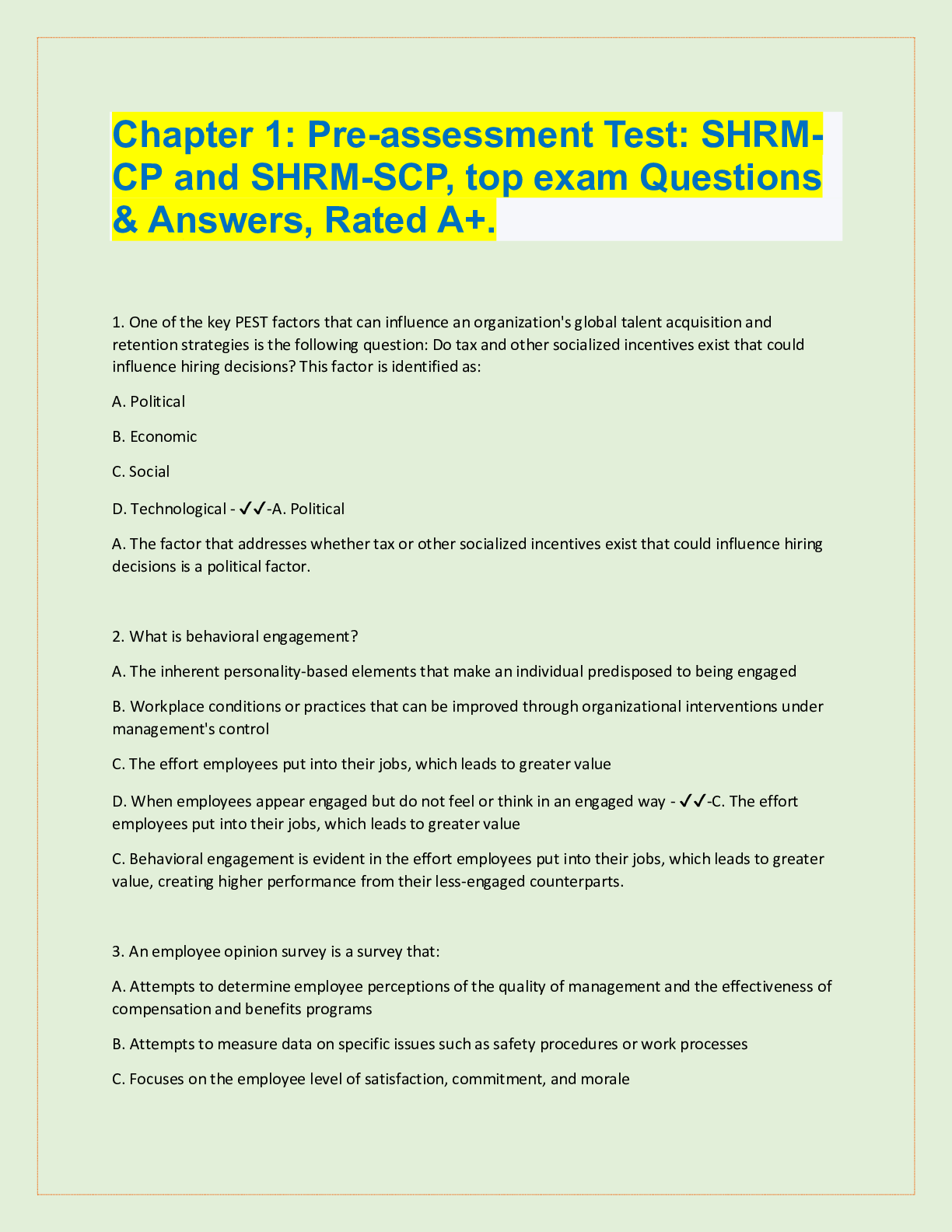
Reviews( 0 )
Document information
Connected school, study & course
About the document
Uploaded On
Apr 16, 2022
Number of pages
10
Written in
Additional information
This document has been written for:
Uploaded
Apr 16, 2022
Downloads
0
Views
47

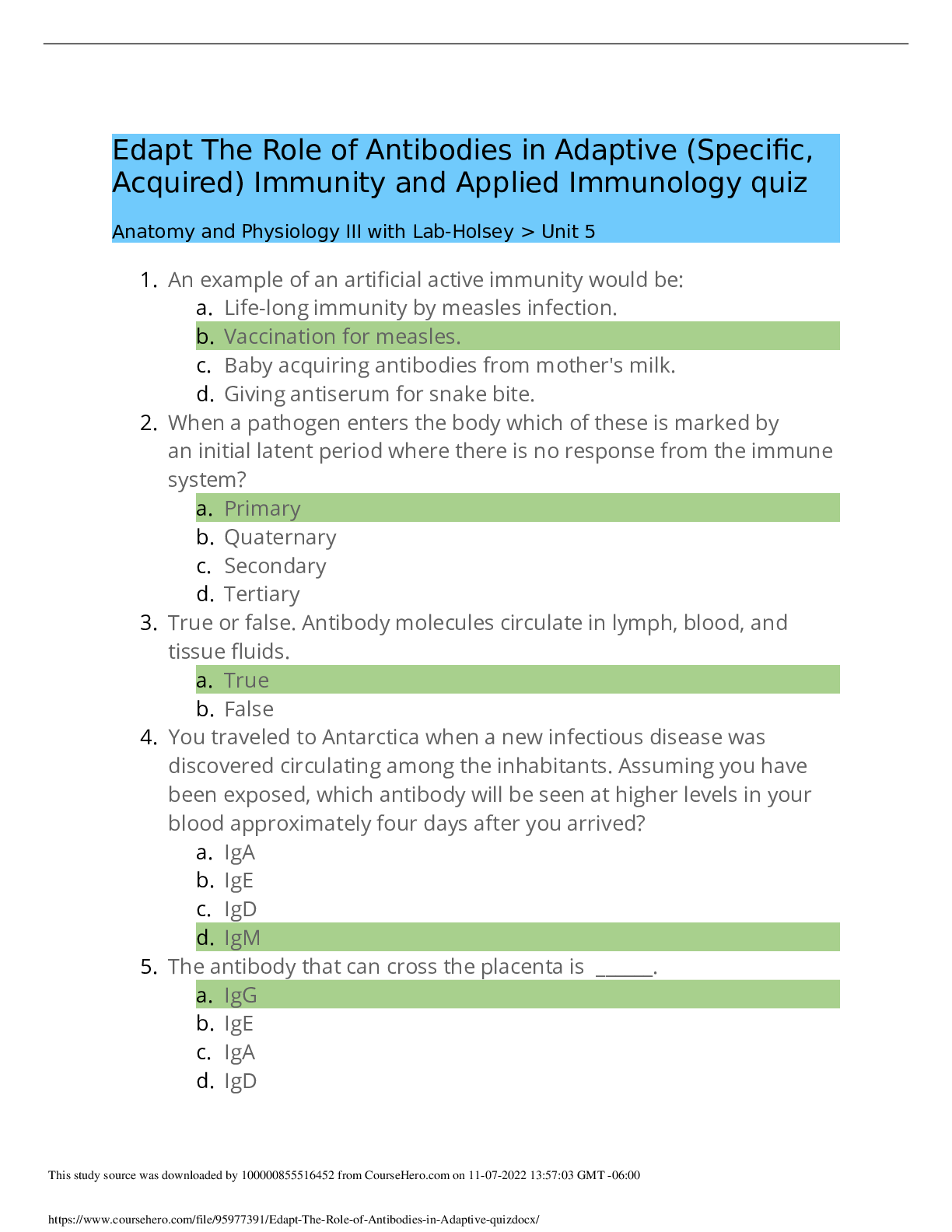
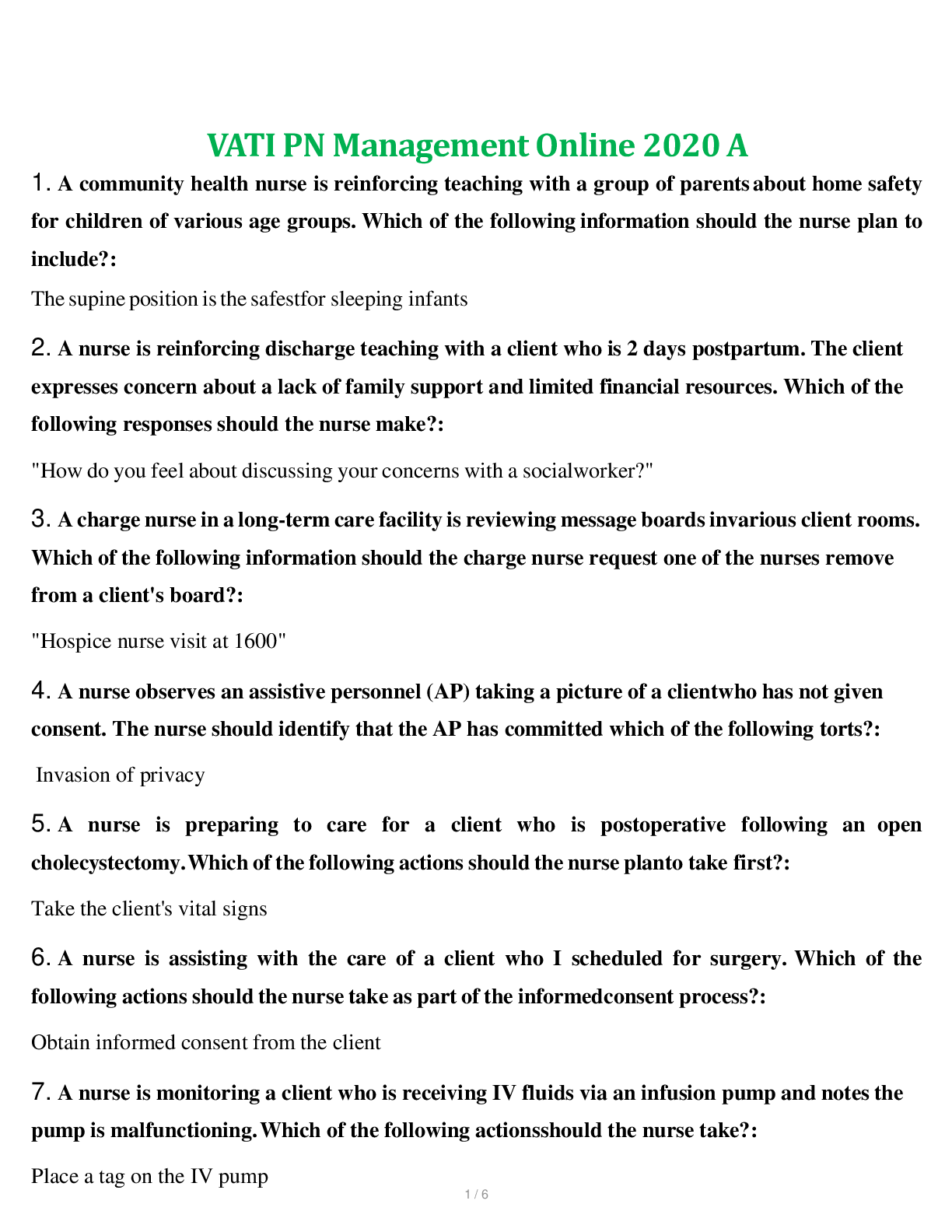
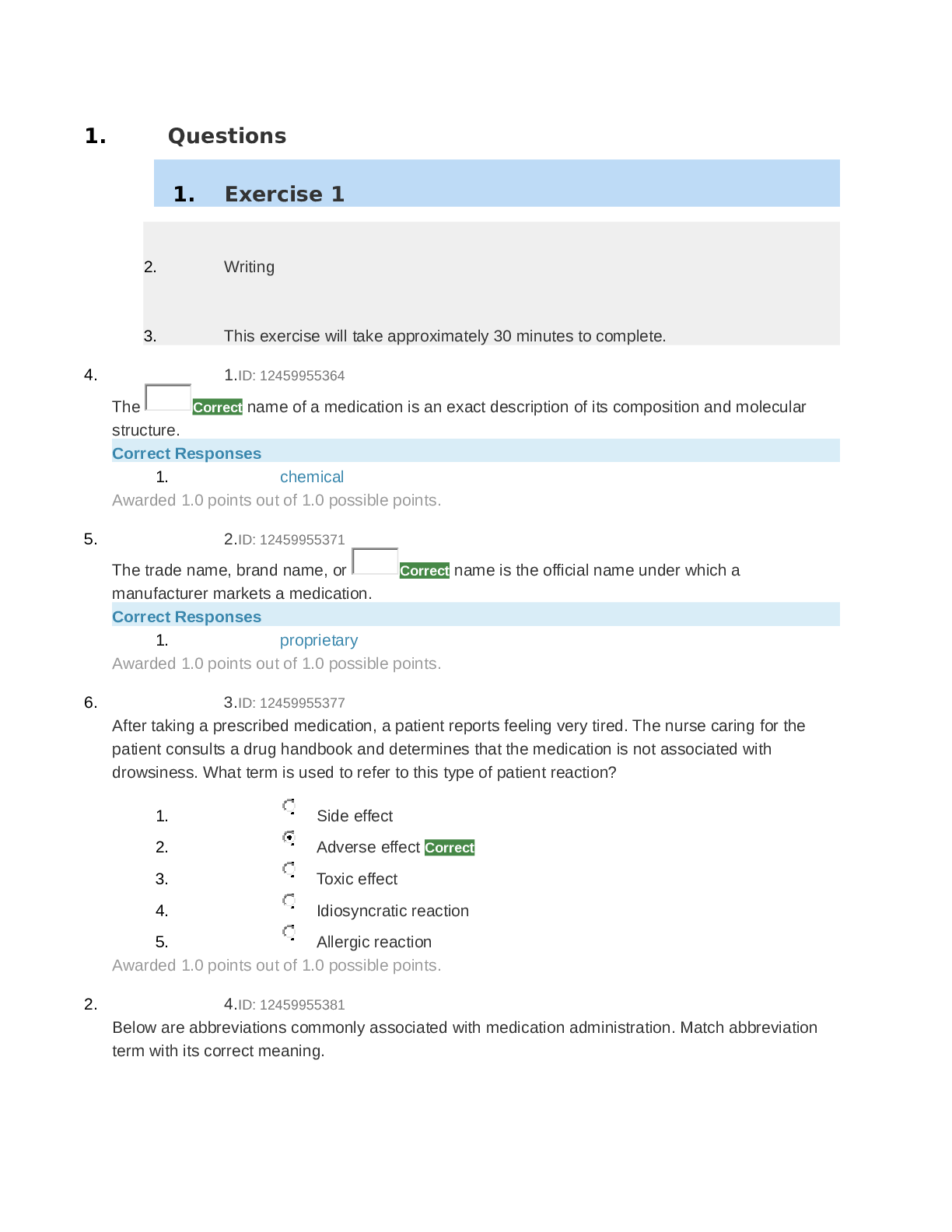
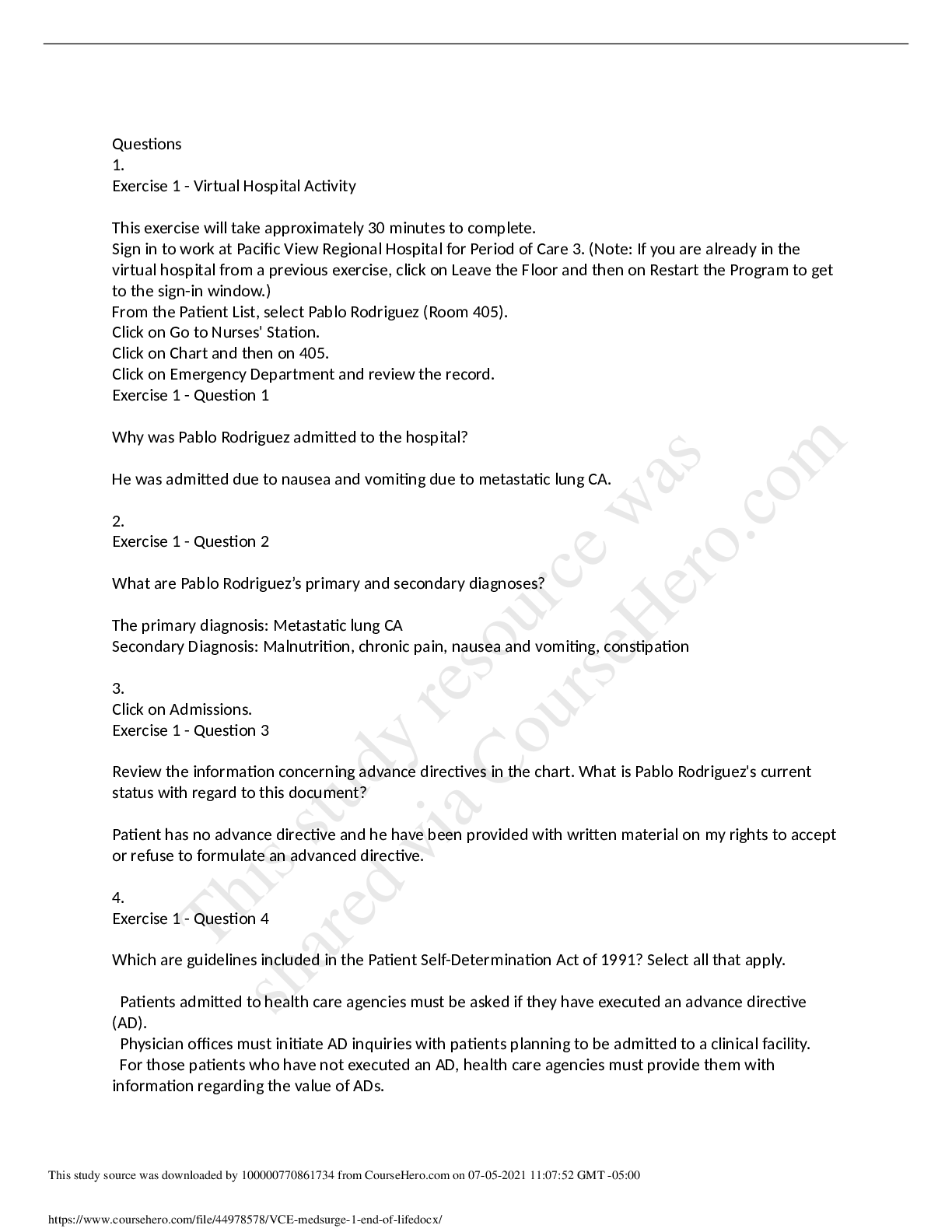
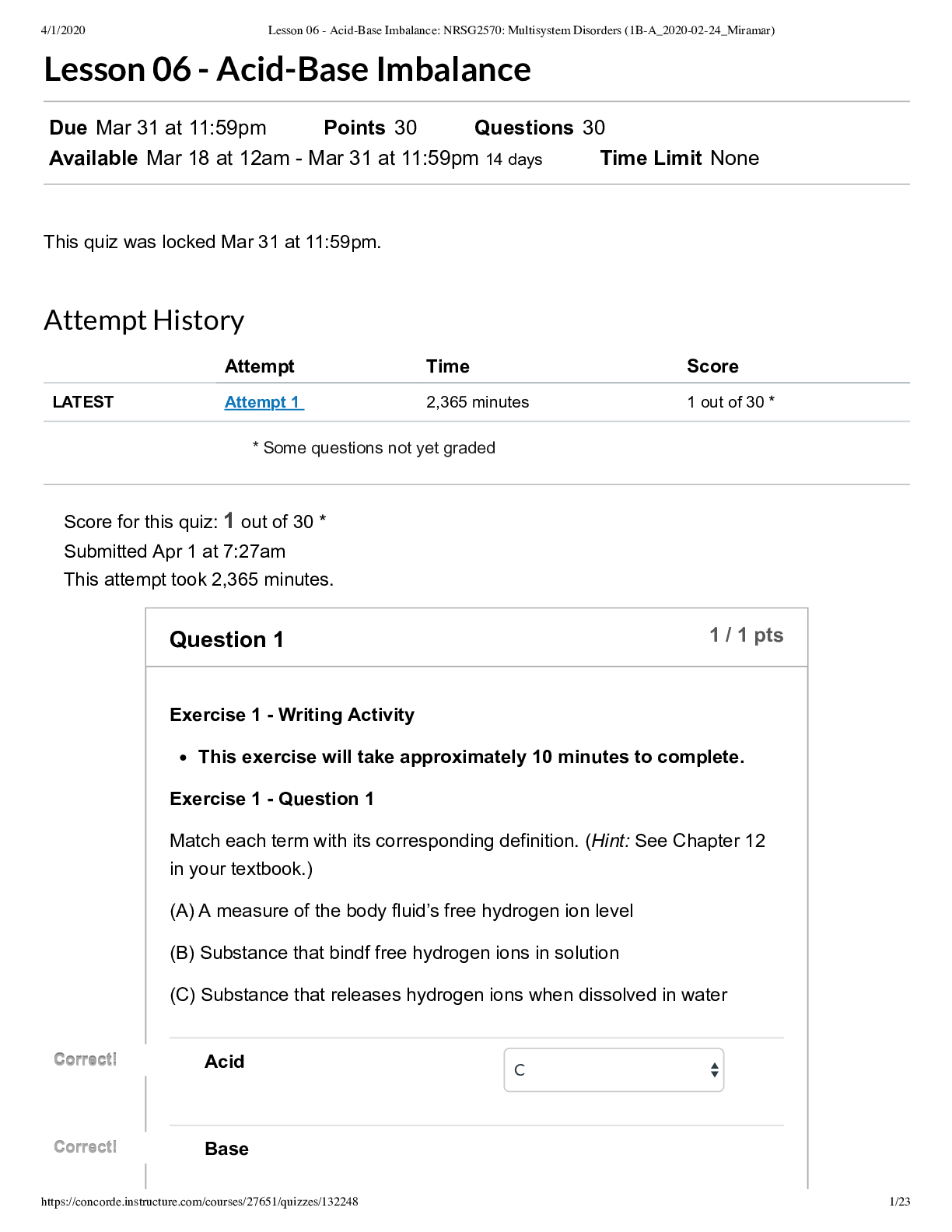

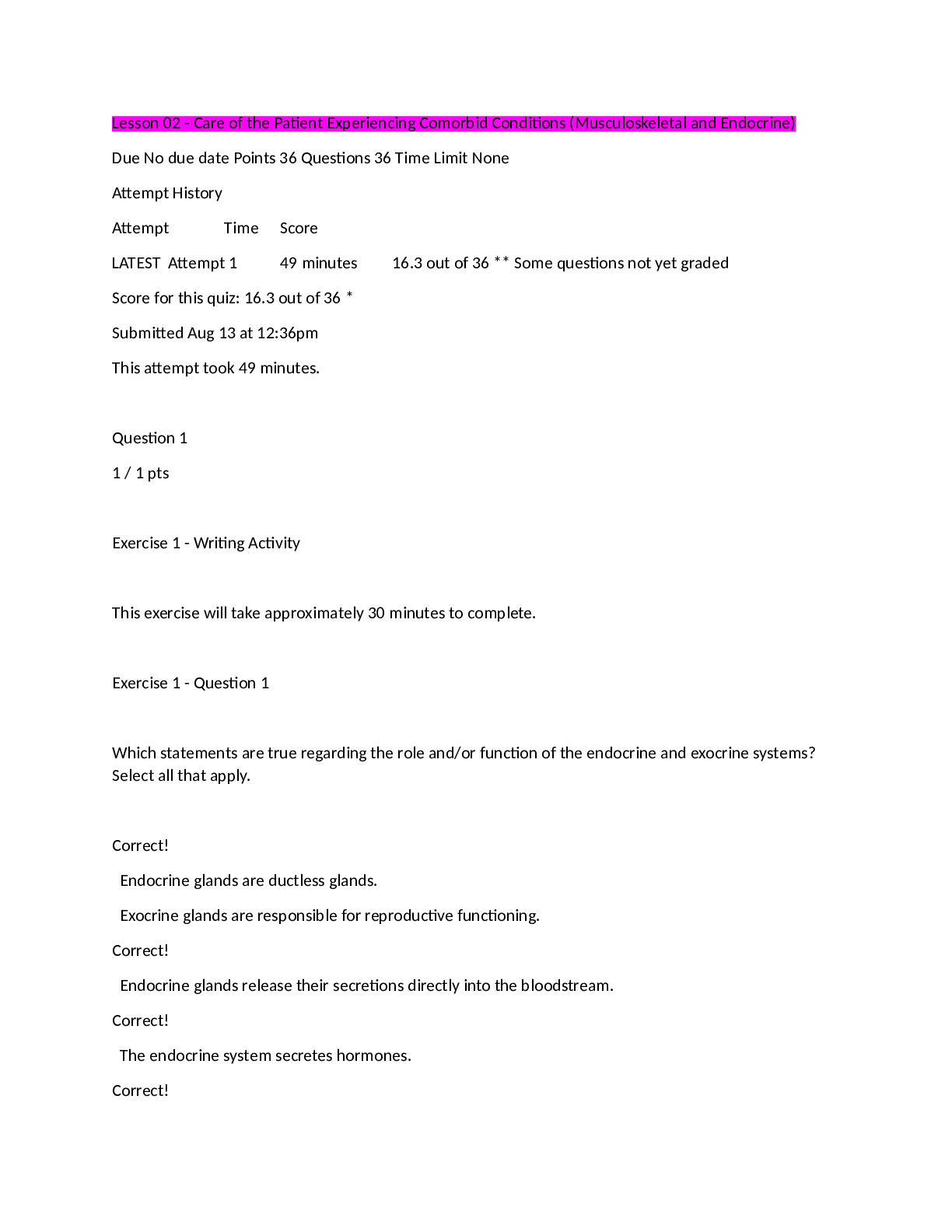
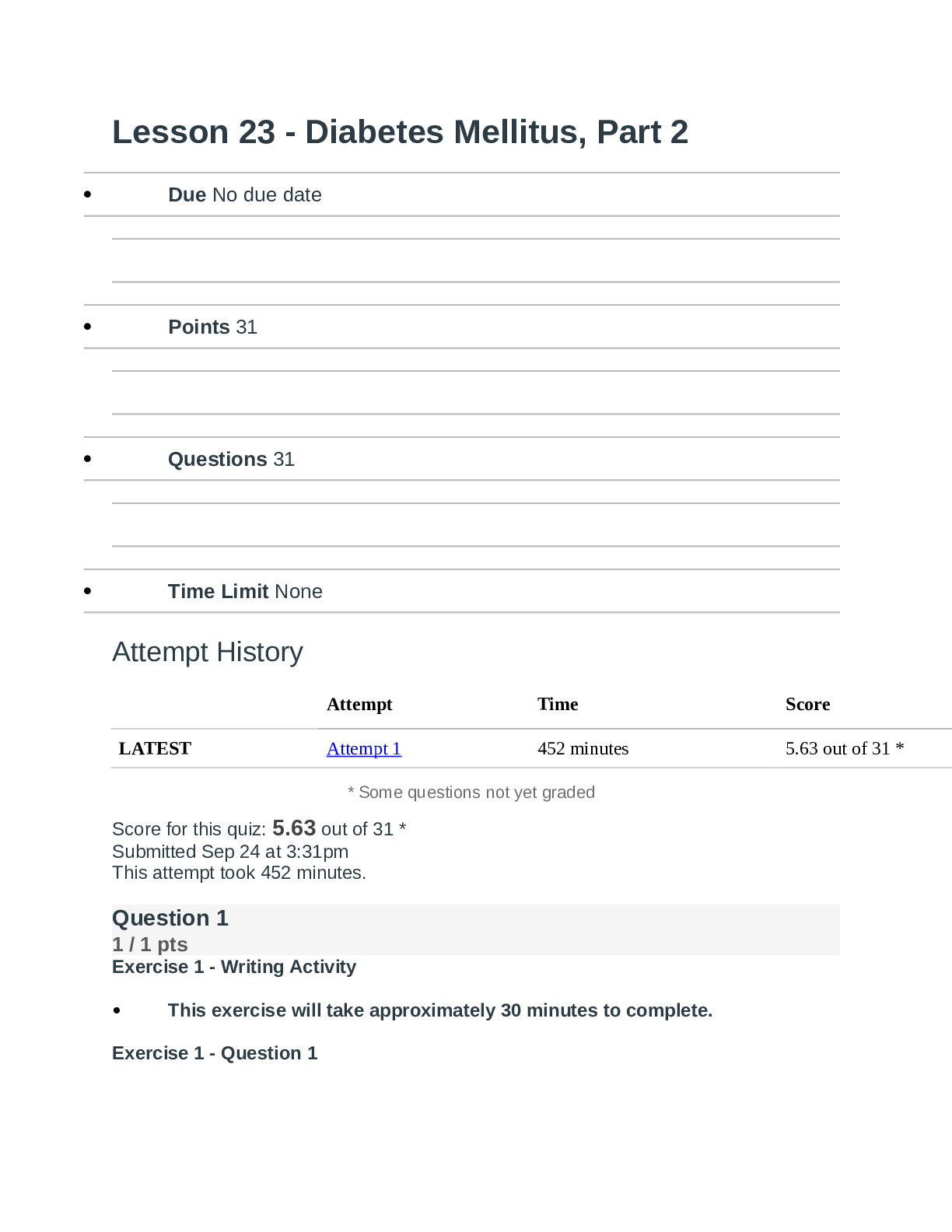
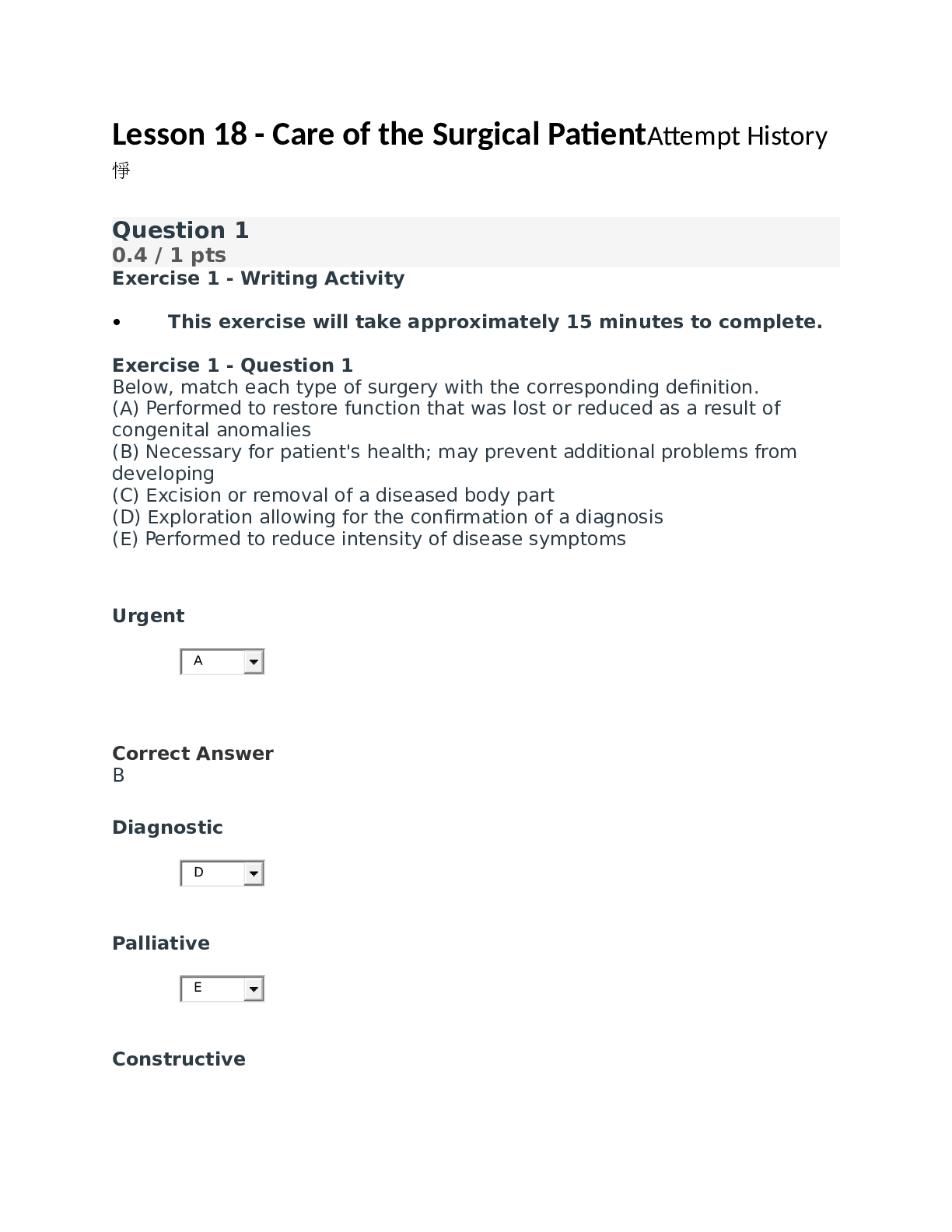
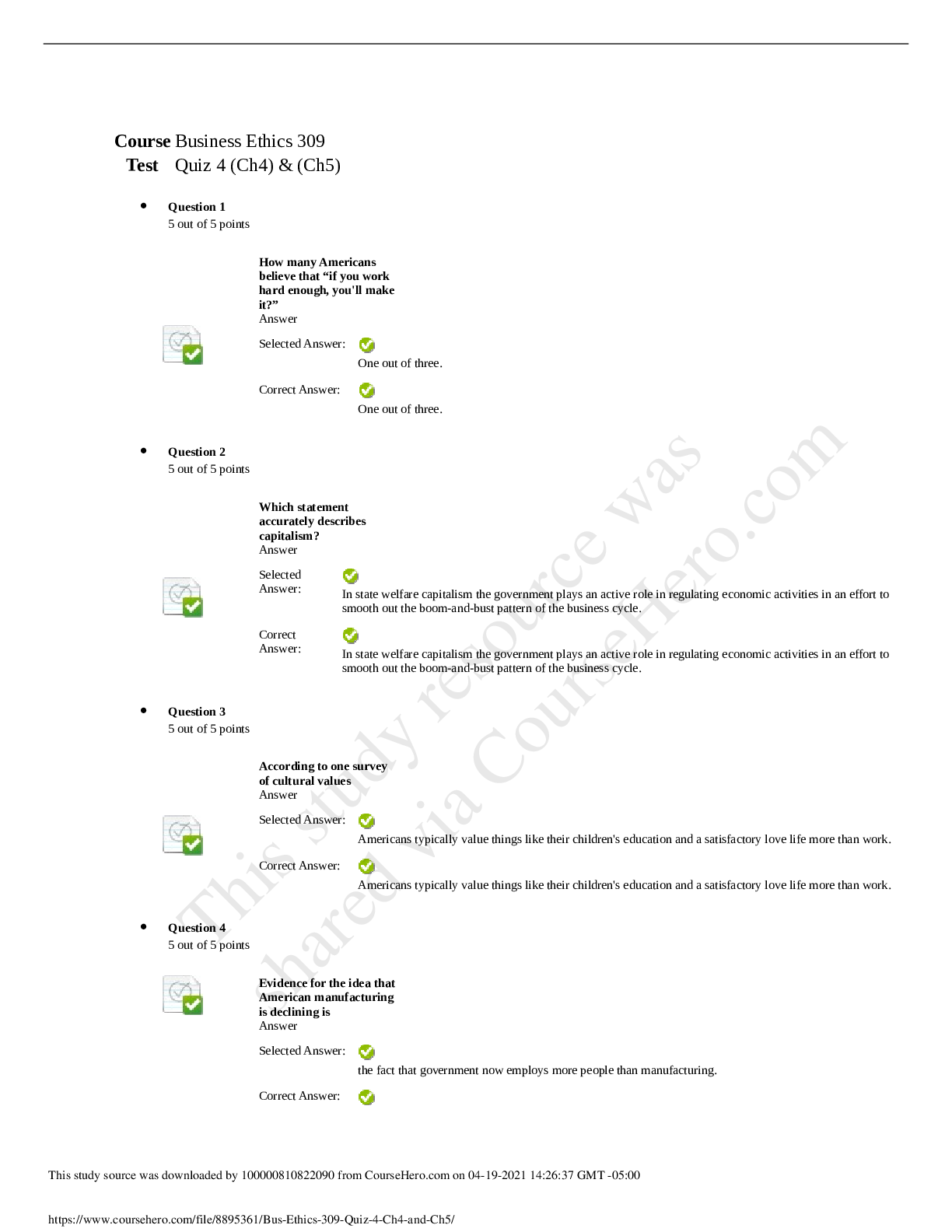

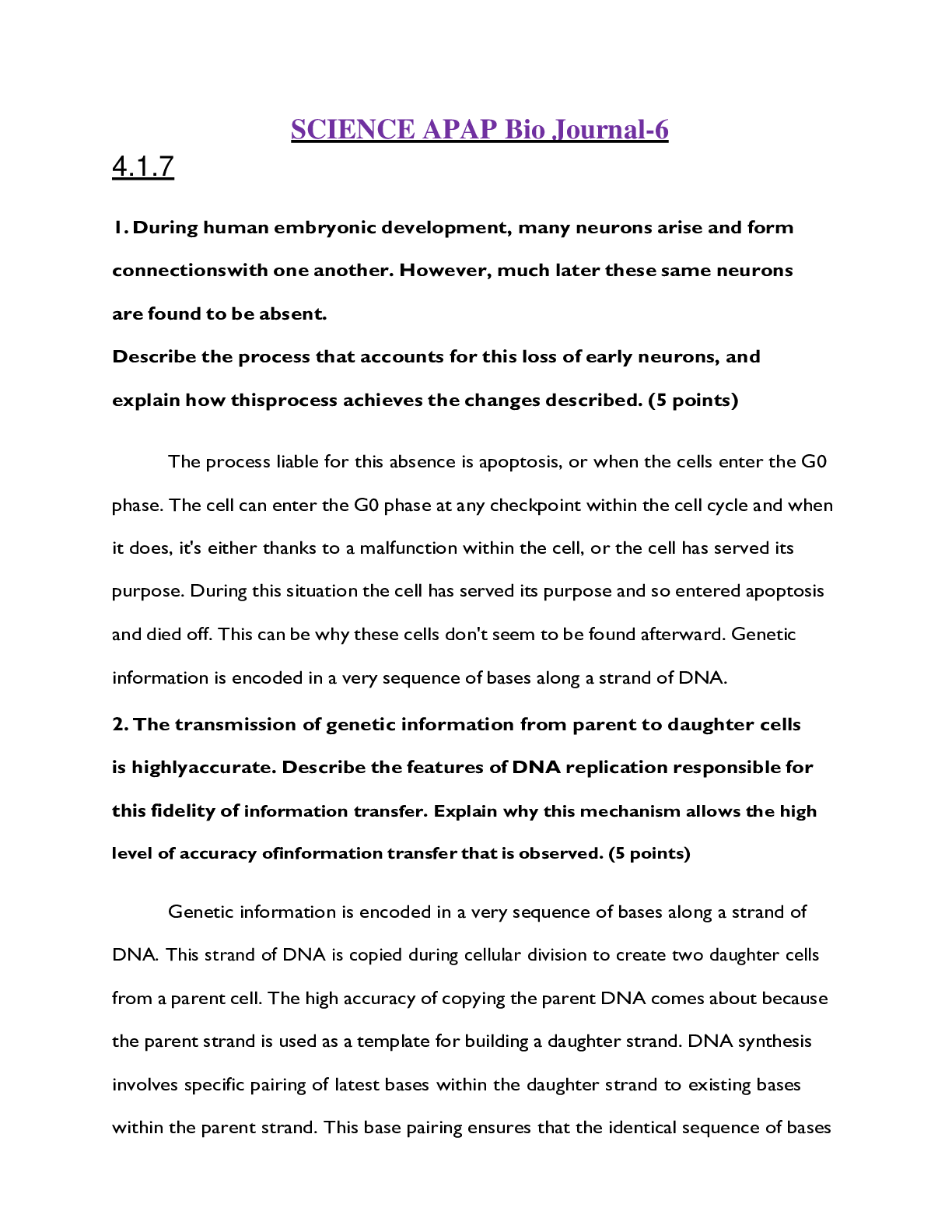
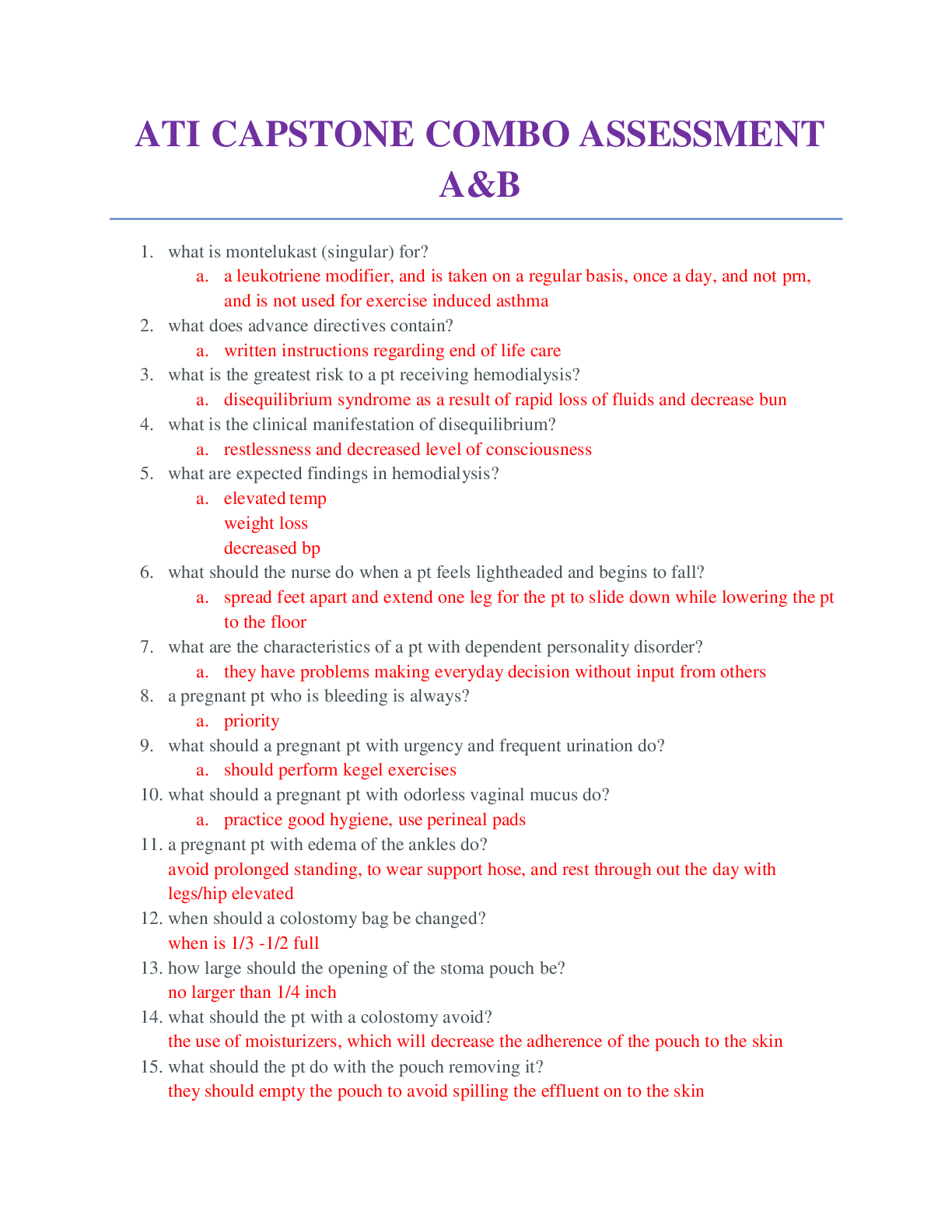
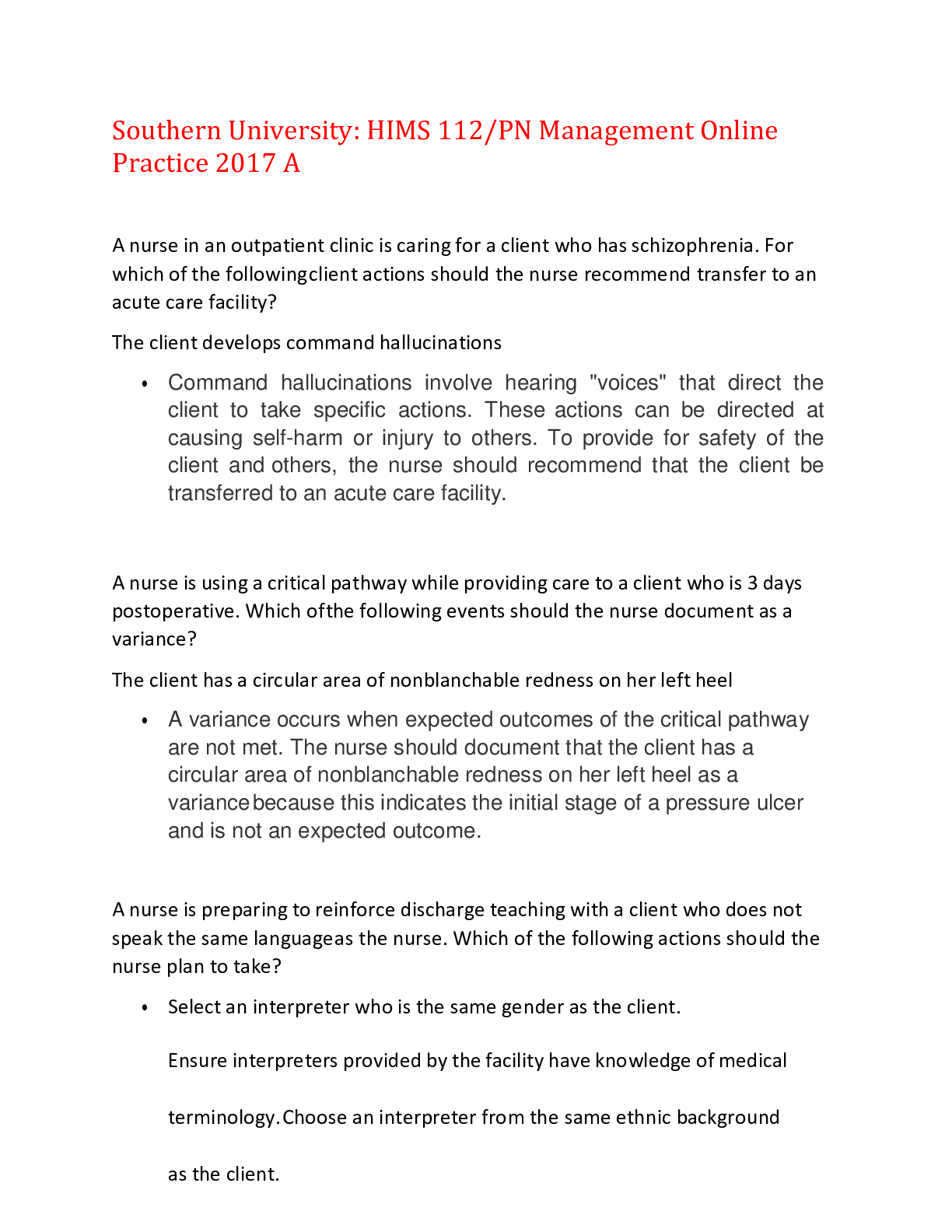
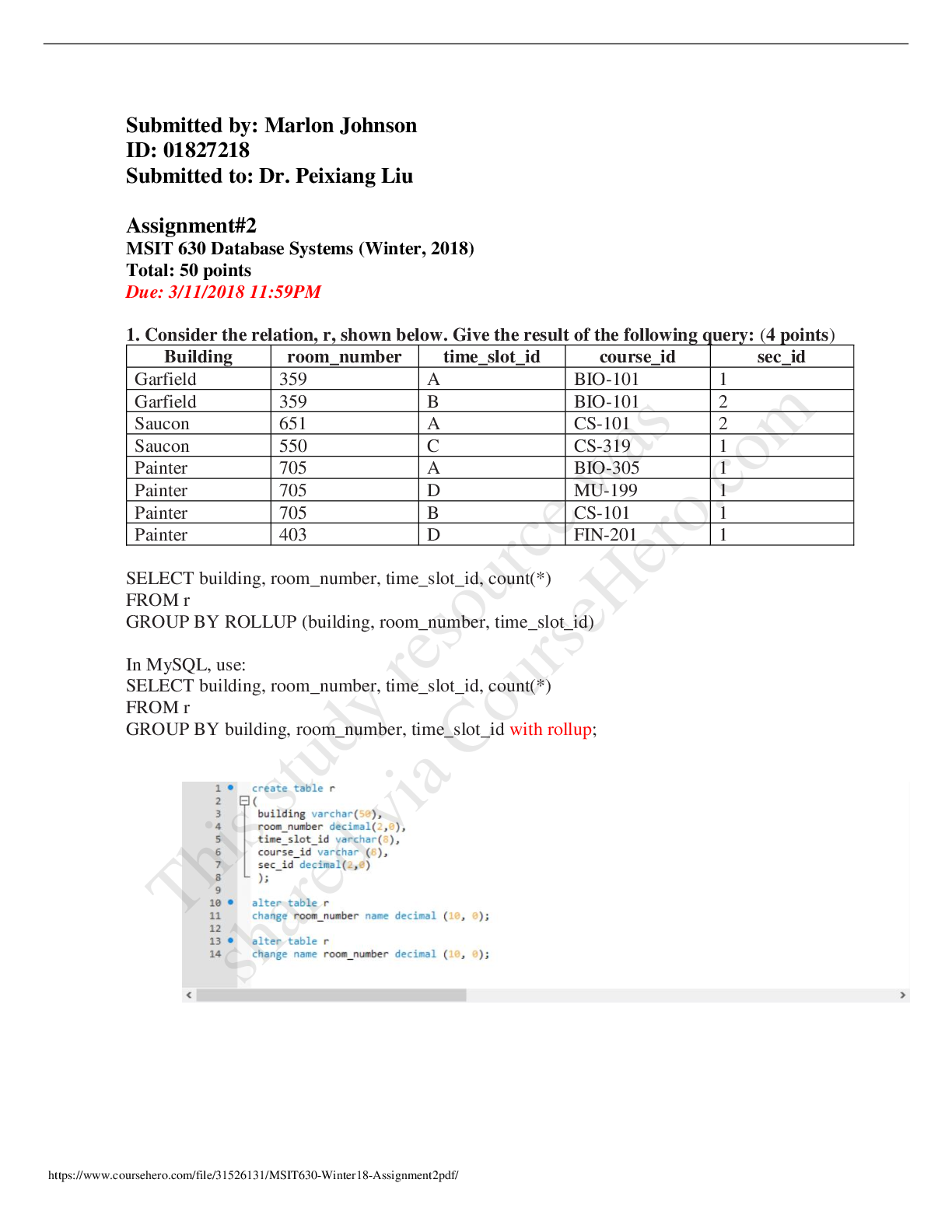
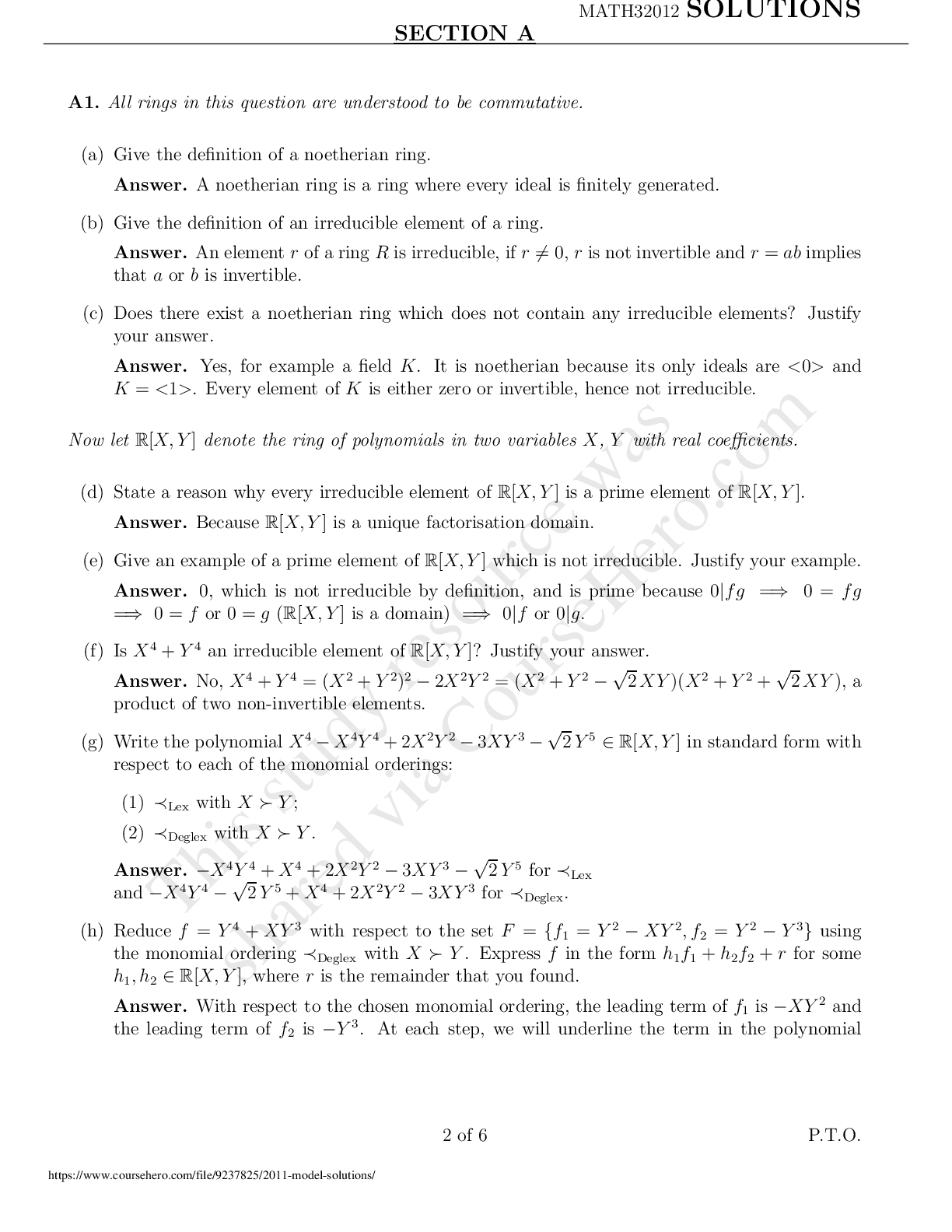
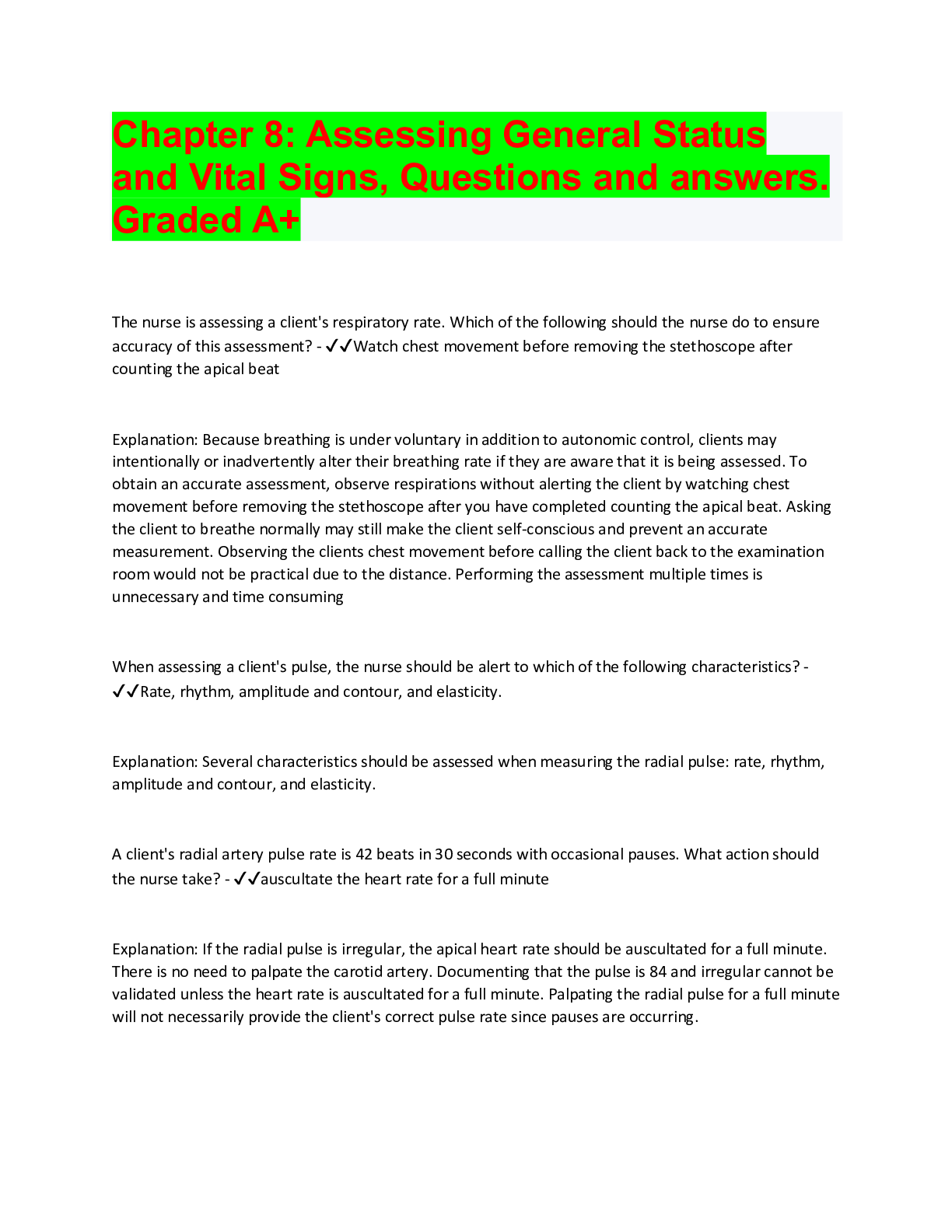
.png)
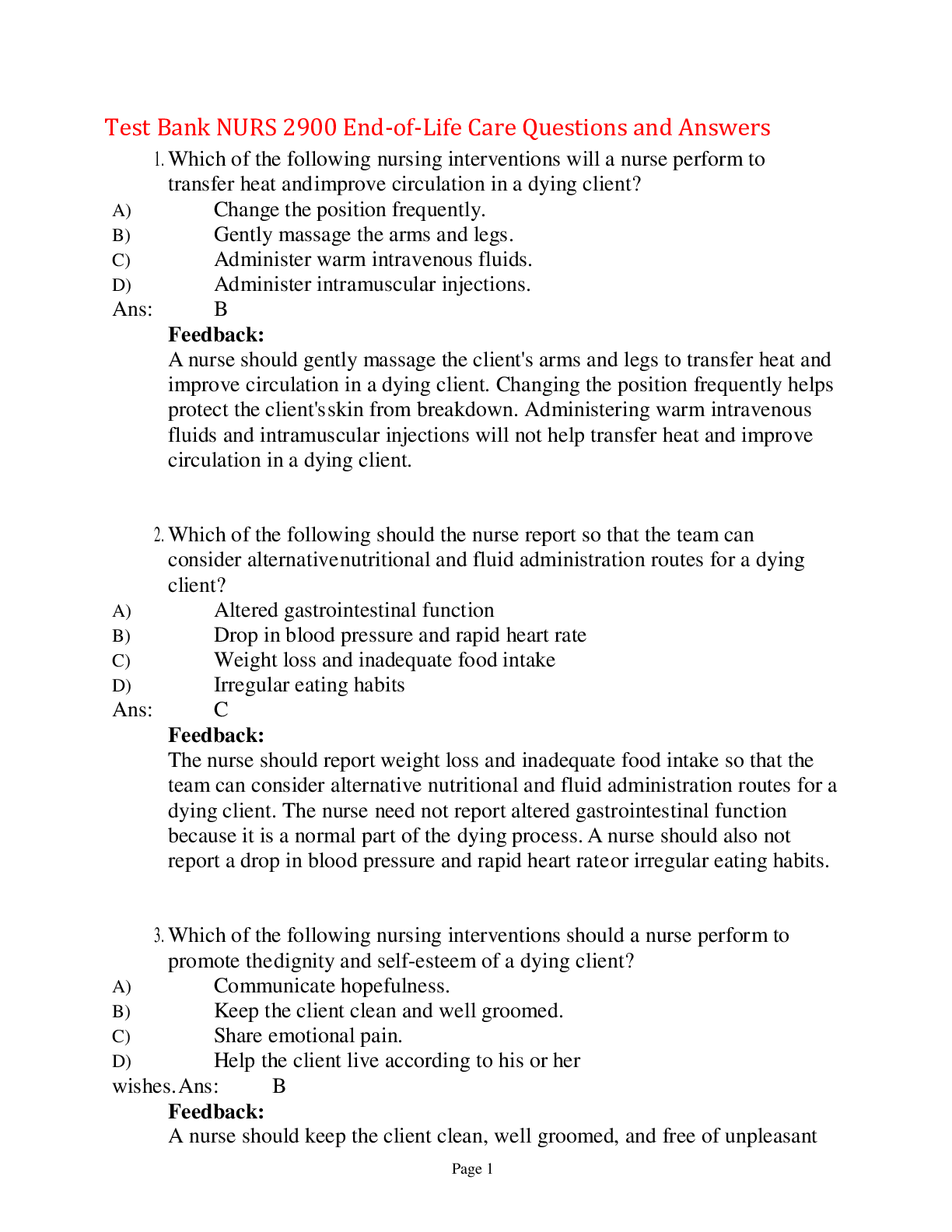
.png)
.png)
.png)
.png)
.png)
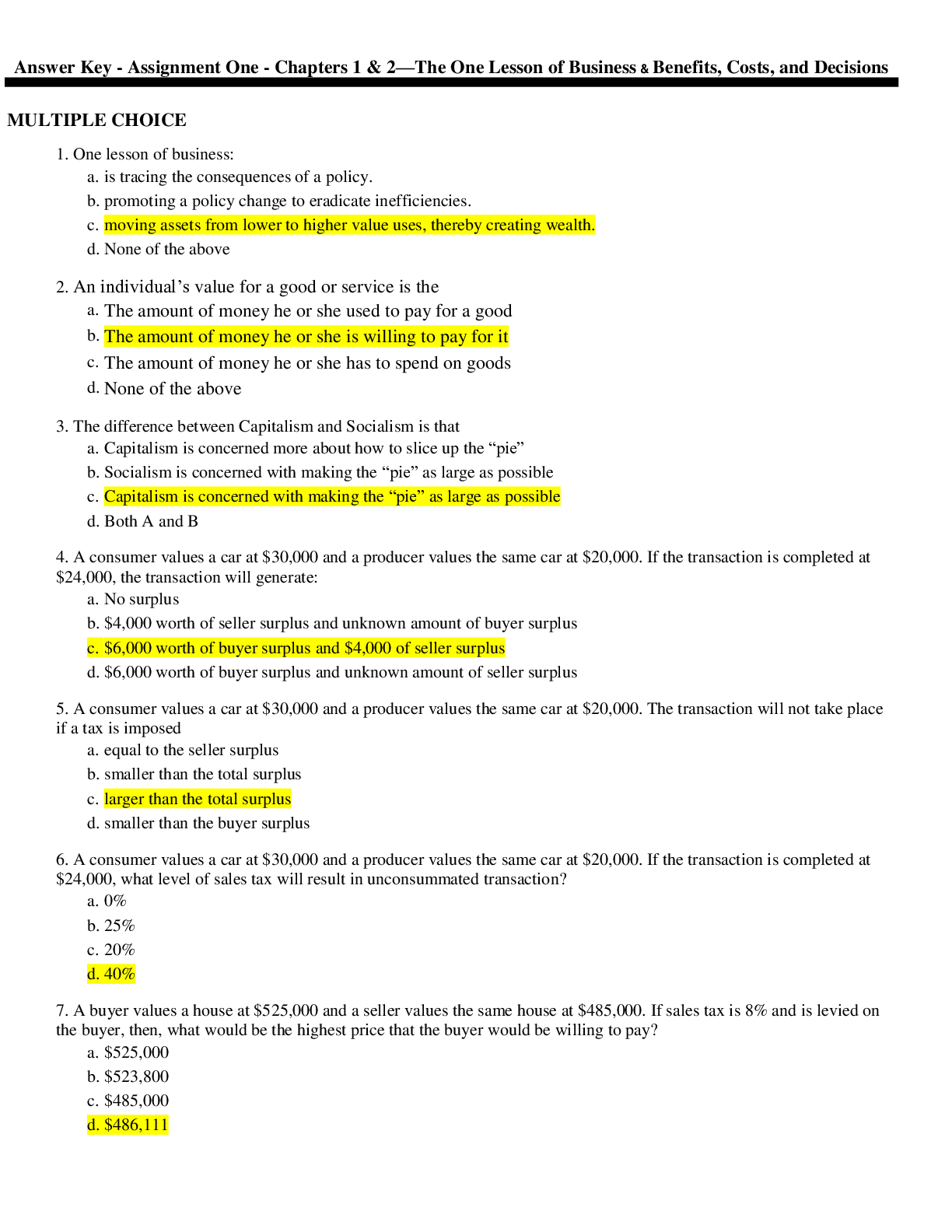

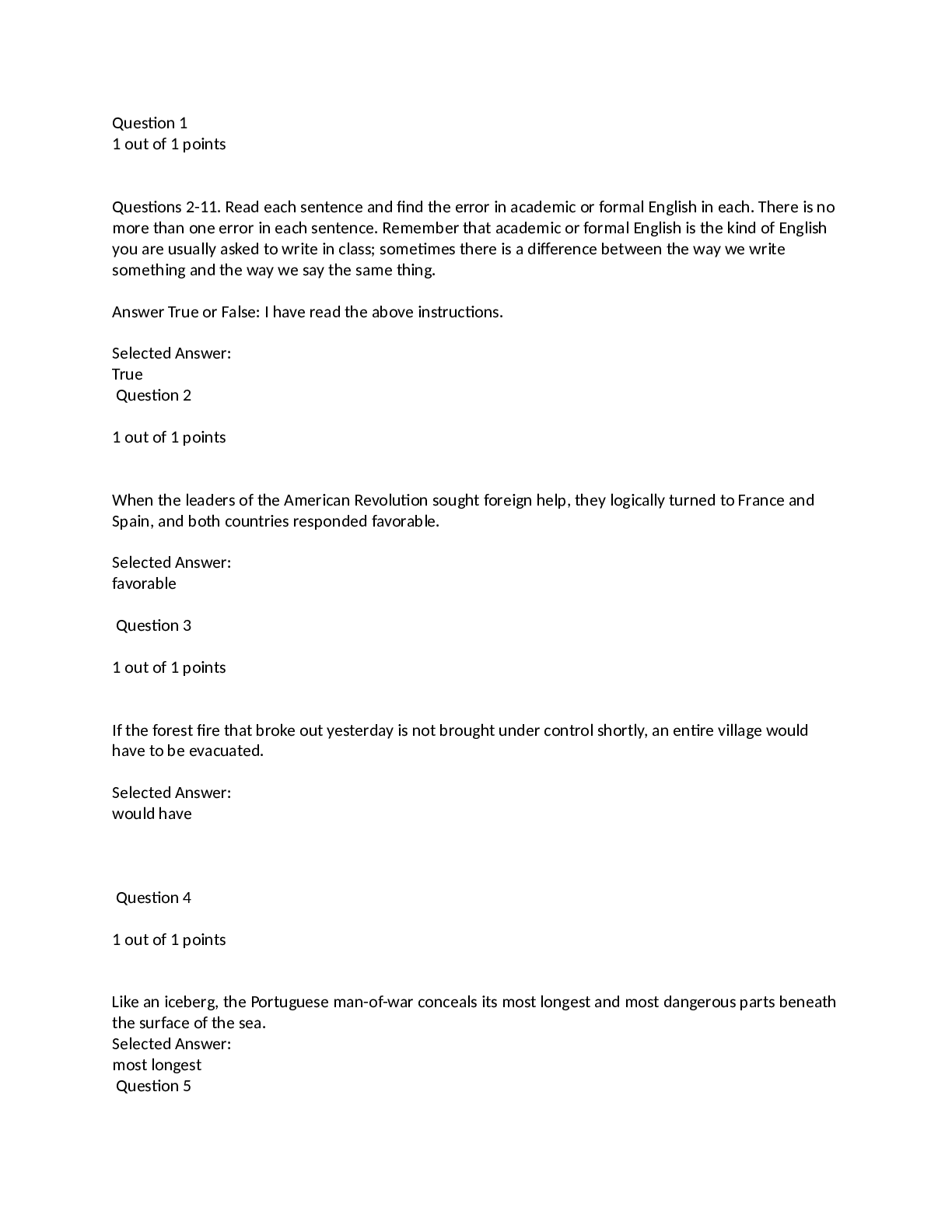
.png)
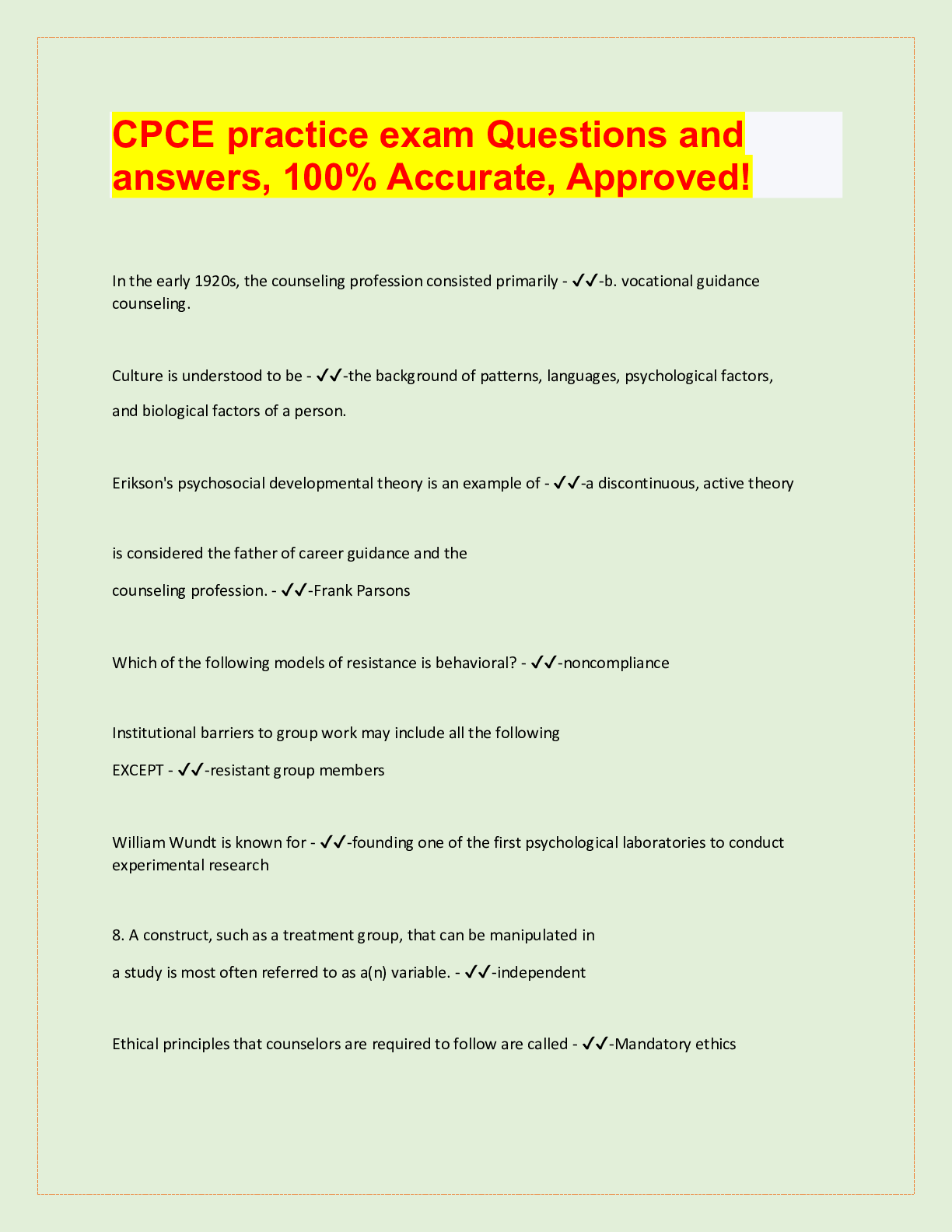
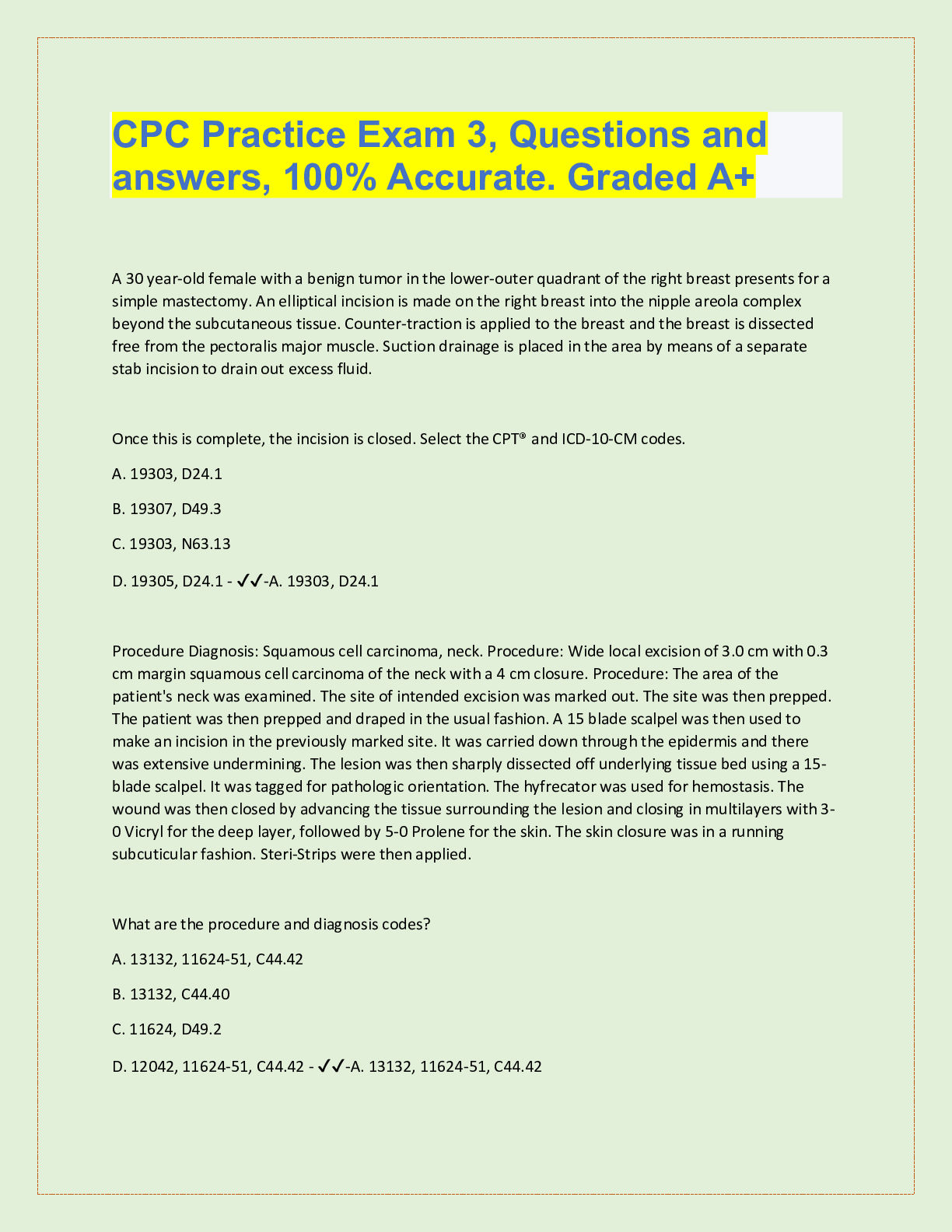
.png)

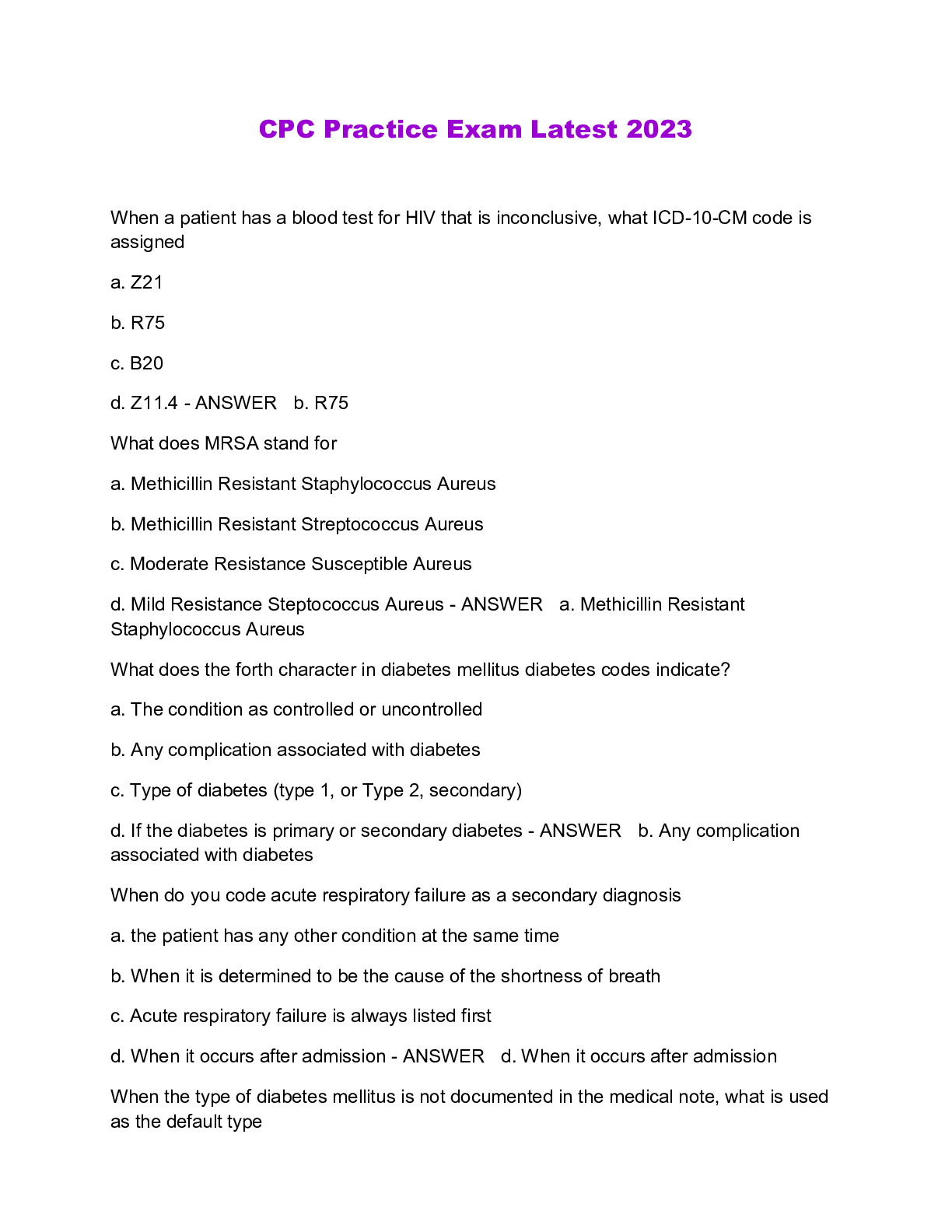
.png)


